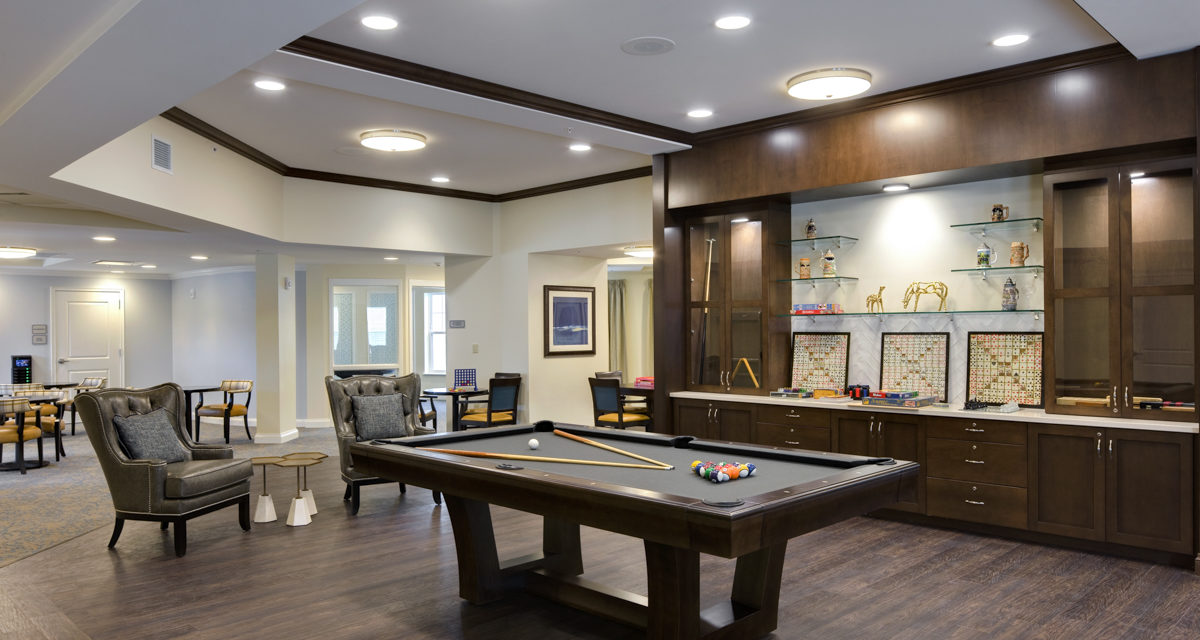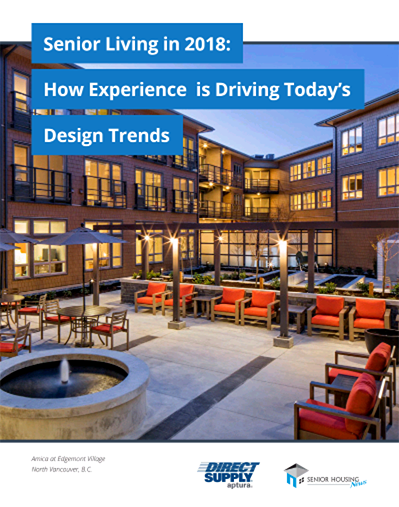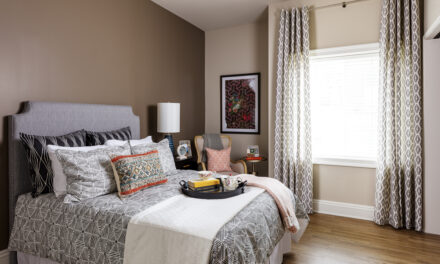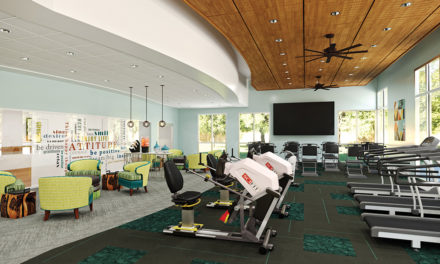From sensory dining areas to tech-integrated wellness spaces, today’s senior living communities must prioritize intentional, experience-driven design to stay competitive.
What is experiential design in senior living?
Experiential design in senior living goes beyond aesthetics. It focuses on how a space feels, how it flows and how it supports physical, emotional and cognitive health. It’s a strategic approach that:
- Encourages physical activity and cognitive stimulation
- Supports autonomy, comfort and daily routines
- Uses sensory cues — light, texture, sound and biophilia — to enhance well-being
For baby boomers, who expect more from retirement living, experiential design is a key differentiator.
Wellness design ideas for senior living communities in 2025
Today’s wellness spaces are immersive and multi-functional. They’re designed to engage body, mind and spirit — not just provide services.
Plan for holistic wellness
Use your community’s mission and resident needs to guide amenity choices:
- Independent living: Tai Chi, yoga or Pilates studios
- Memory care: Sensory rooms, art therapy or podiatry clinics
- Across the board: Natural light, air quality and acoustic design for comfort
Offer amenities that support active senior lifestyles
Design multi-use spaces that promote engagement, movement and enrichment:
- Game rooms and music studios
- Garden courtyards and greenhouses
- Tech lounges and libraries
- Meditation or mindfulness spaces
In-room wellness tip: Replace unused desks with personal fitness nooks to encourage daily movement.
Create sensory, interactive senior dining experiences
Dining is a core part of community life. Experiential design can elevate the experience:
- Resident-accessible kitchens allow seniors to participate in meal prep — blending, chopping and baking
- Outdoor dining areas connect residents with nature, improving mood and cognition
These features promote independence, connection and a sense of purpose.
Integrate smart wellness technology in senior living design
Forward-thinking communities are using technology to improve both care and quality of life:
- Connected health monitoring for safety and transparency
- Medication reminders and alerts for better adherence
- Smart lighting and climate controls for comfort and energy efficiency
- Robotics in dining and floor care to boost engagement and streamline operations
At Direct Supply®, our Innovation & Technology Center is where we test these ideas to help communities stay ahead.
Why experiential design matters for the future of senior living
Done right, experiential design can transform your community’s identity and performance. It helps:
- Increase resident satisfaction and longevity
- Attract new, active older adults
- Differentiate your community in a competitive market
Ready to transform your senior living spaces?
Direct Supply® designs furniture and interior solutions that reflect the latest in experiential design and wellness. Our Direct Supply Aptura® team partners with you to create environments that foster connection, comfort, and long-term success.
Download our whitepaper to explore how experiential design can revamp wellness spaces, cultivate your community identity, enhance staff areas, and strengthen resident engagement.
Connect with our Direct Supply Aptura® design experts to start bringing experiential design into your community today.





